Life in the world’s biggest refugee camp
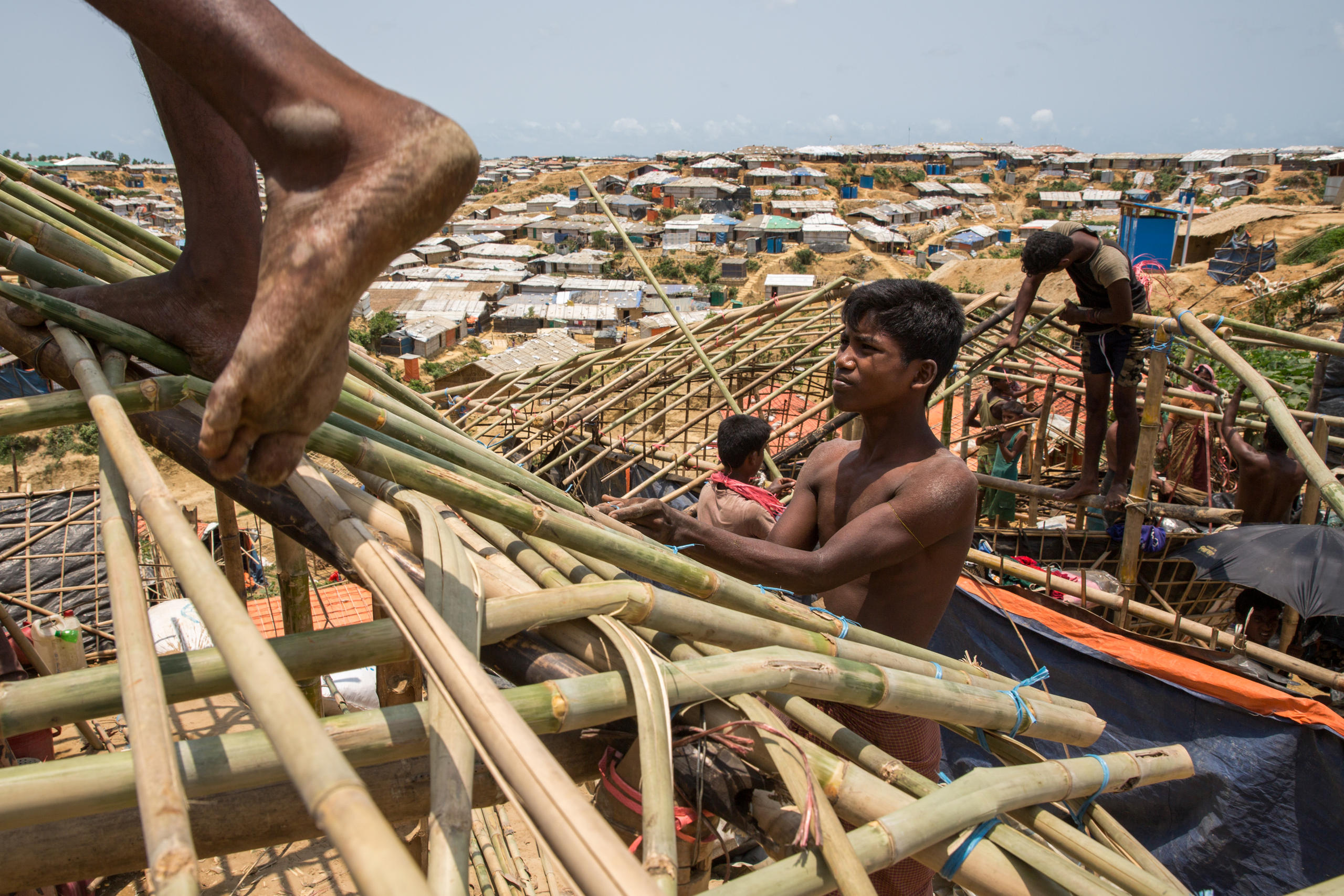
What’s it like to live in the biggest refugee camp in the world? Swiss Helvetas employee Alexa Mekonen works in a camp in Bangladesh which is home to one million Rohingya refugees from Myanmar. She is helping to make their everyday life more bearable.
“Of course, I could have a simpler life. But do I want that?” Alexa Mekonen laughs. “No!” The 31-year-old is climbing a hill to reach camp 8E of the largest refugee settlement in the world. It is hot, 35 degrees, and very humid in the run-up to the rainy season.
Nearly one million Rohingya live in the hinterland of Cox’s Bazar, Bangladesh’s most popular tourist destination. They are spread over 34 densely populated sub-camps. Around 220,000 people came here between the 1970s and 1990s, when the Rohingya were systematically driven out of their homeland Myanmar for the first time. Since August 2017, over 740,000 have fled here across the nearby border.
‘So many people!’
The Rohingya – a persecuted minority
The Rohingya are a Muslim minority in the majority Buddhist Myanmar, where they are not recognized and do not possess citizenship. Before the great exodus in August 2017, about one million Rohingya lived in Myanmar. They fled when their villages were destroyed in a military crackdown after militant Rohingya had attacked police stations and killed police officers. According to UN reports, thousands of women and men were raped, tortured and murdered in the crackdown. A UN reportExternal link has said Myanmar’s army chief and five other top military officials should be prosecuted for genocide, crimes against humanity and war crimes.
Here they live in the simplest dwellings, built from bamboo sticks and plastic tarpaulins, hut after hut, spread over an area of 26 square kilometres.
“When I first came here, I was shocked,” says Mekonen. That was at the beginning of April 2018: “My first thought was: so many people!” And they lacked everything: food, water, electricity, and especially an infrastructure that would make life in this improvised city bearable. Mekonen was happy to have something to do at once.
In a first phase, immediately after the arrival of the first refugees, Helvetas had distributed emergency aid kits containing, among other things, soap and water containers.
Six months later, the Swiss development organisation began providing support to the Rohingya beyond short-term emergency measures. During Mekonen’s first weeks, Helvetas built 320 latrines connected to large tanks in which faeces are collected. This is where biogas is produced.
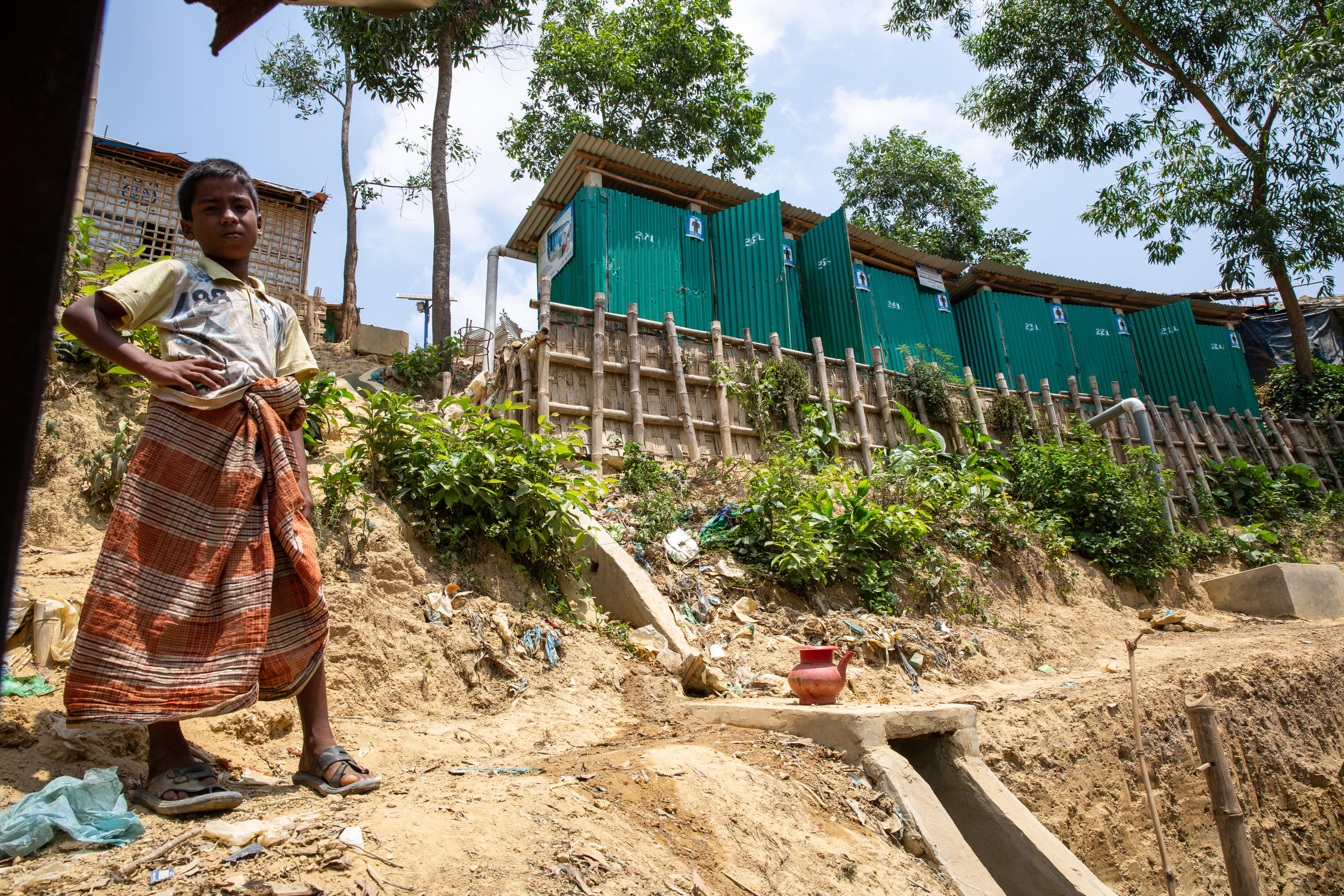
Biogas from the latrines
This will supply 12 communal kitchens built by Helvetas together with a local partner organisation. A total of around 20,000 refugees benefit from these facilities. “The system solves several problems,” says Alexa Mekonen. “People don’t have to do their business outside, and thanks to the gas they are no longer dependent on wood as fuel, because there is none of that here anymore.”
In fact, after their arrival, the Rohingya more or less cut down the forests on the hills around Cox’s Bazar. They needed space and wood to build their huts and make fires. Now nothing holds the ground anymore. “That was the next big problem when I arrived. The monsoon, the rainy season, begins here at the end of May and the beginning of June. The huts on the steep slopes were threatened by landslides.”
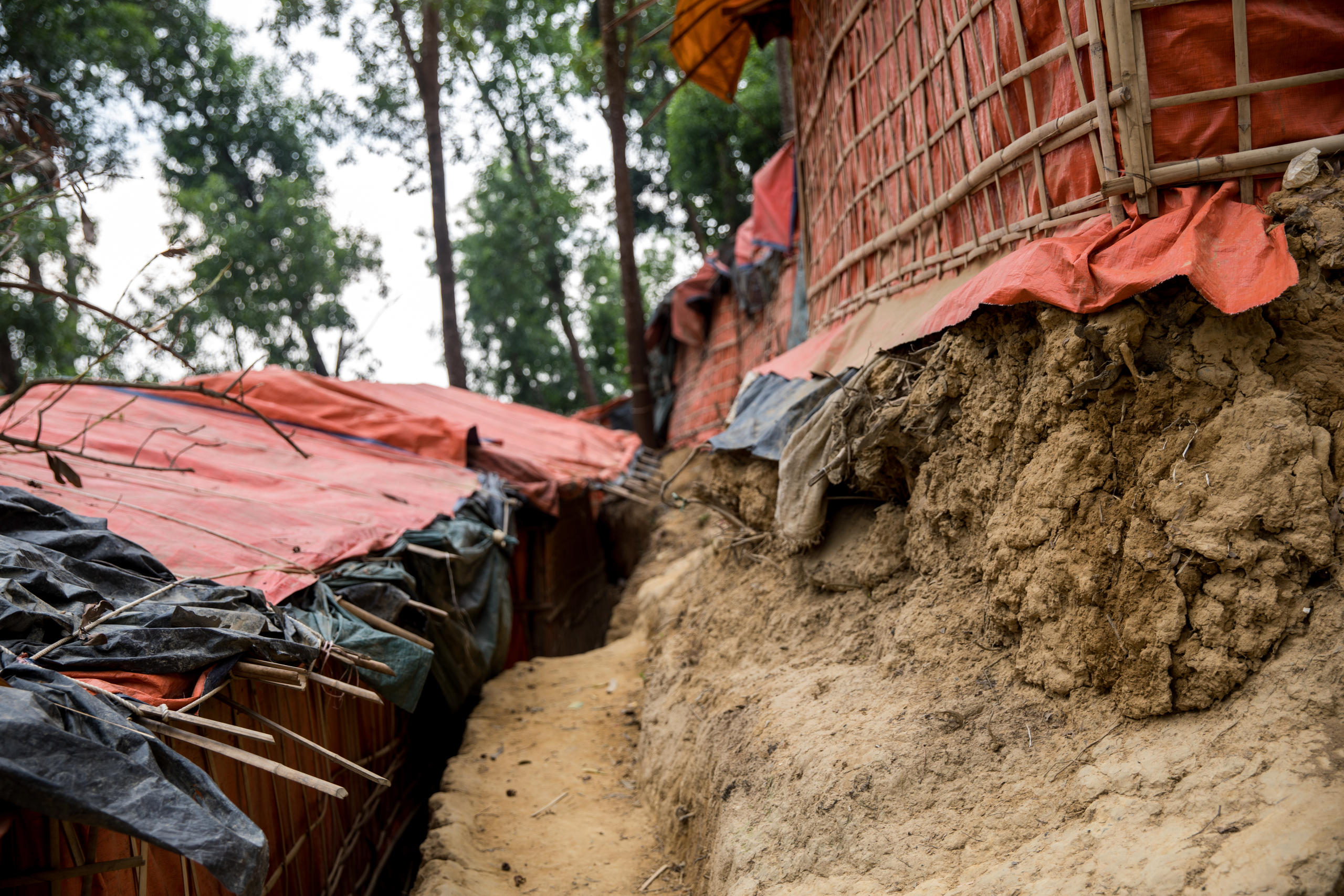
Complicating matters further, the Rohingya have to build their huts from bamboo and plastic tarpaulins. They are not allowed to use stones or bricks. Not even a concrete foundation is permitted, because the Bangladeshi government wants the Rohingya to return to Myanmar as soon as possible. But that’s not an option for the Rohingya, since there are no serious signs yet from the Myanmar government that it will provide them a free and safe life in their homeland.
In Bangladesh, the Rohingya are only considered “temporarily admitted”, making their situation even more difficult. “The thousands of children born here are stateless. They are not officially allowed to go to school because they are not recognised as refugees,” says Mekonen.
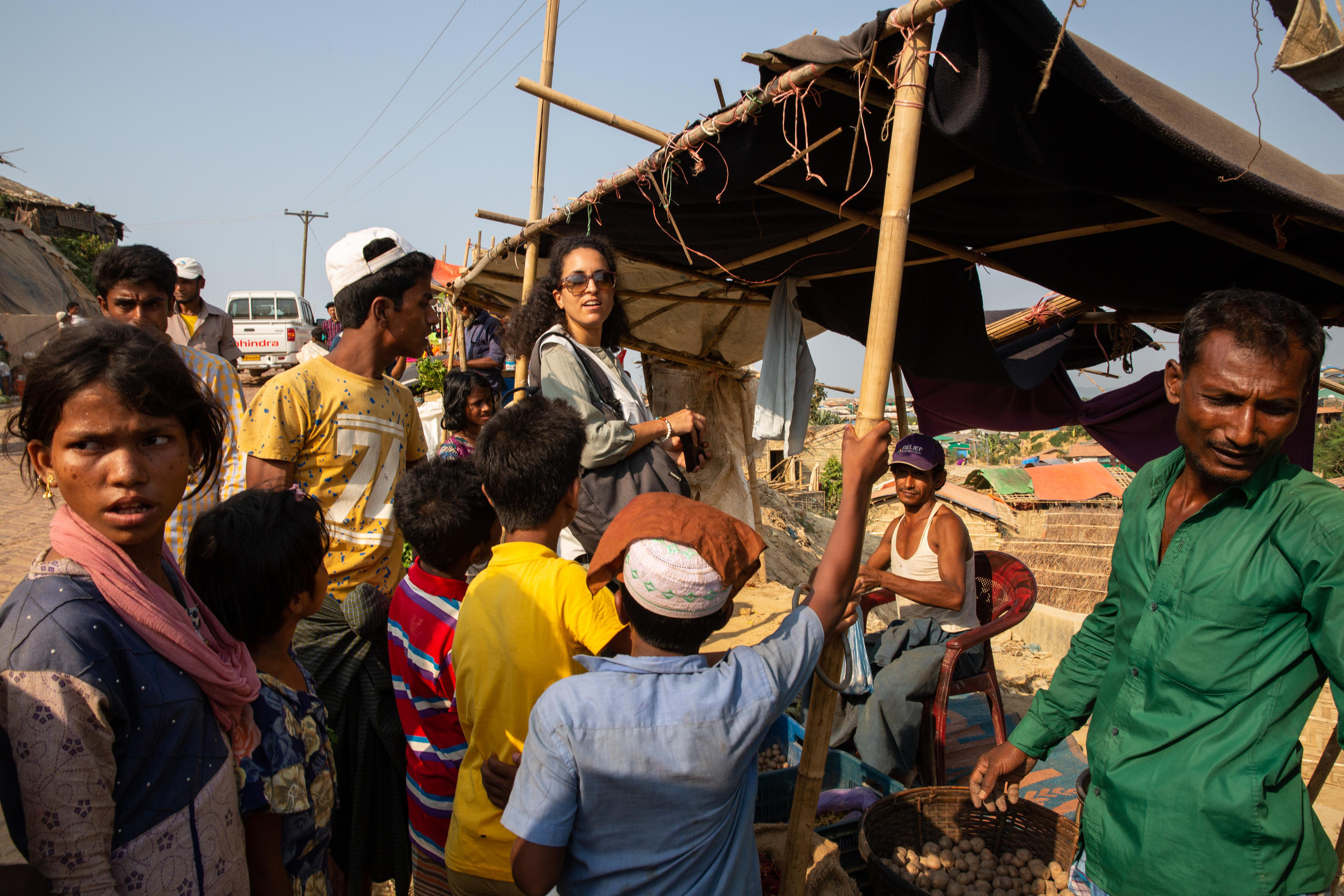
In the meantime we have arrived at the top of the hill. Immediately she is surrounded by a group of children. Mekonen doesn’t speak the Rohingya language, but with signs, gestures and the help of a translator she can communicate. She approaches everyone openly, wants to know how they are doing and listens to their concerns.
“I’ve always been like that,” she says. As a young adult, she worked in a community centre in Geneva. Then Mekonen went abroad. While studying she went to a refugee camp in Lebanon and travelled to Namibia for a field study. After her studies she went to Tanzania for an internship, where she dealt with issues of gender justice in an agricultural project run by Helvetas.
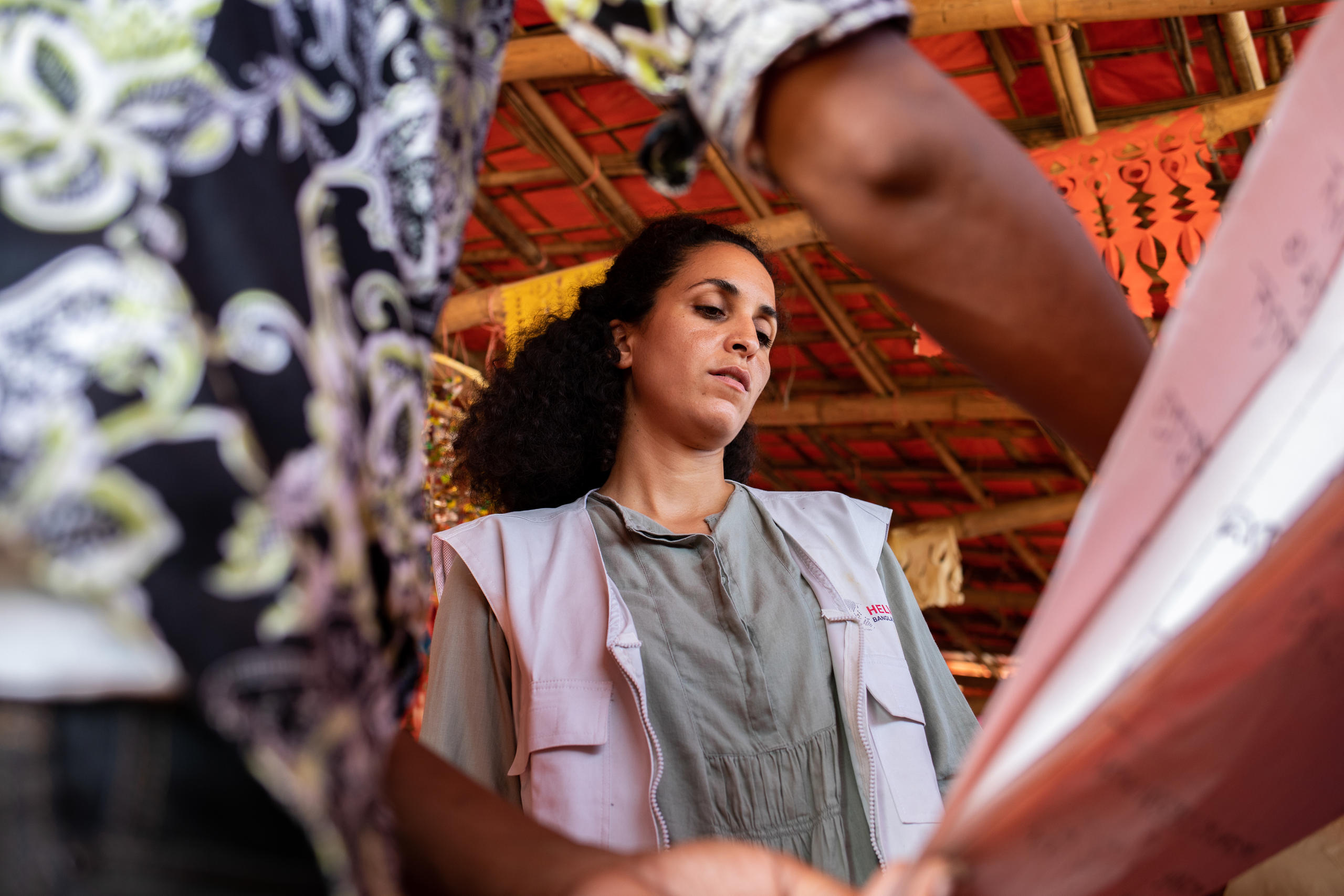
Where does this urge come from? “It probably has something to do with my family background,” says Mekonen. Her father is half-Ethiopian, half-Eritrean. He worked for an international trading company in Geneva. Her mother, a Swiss German, worked there at the airport as a ground worker for an airline. “That’s why we were always able to fly very cheaply as a family.”
And so Alexa and her older brother came into contact with other cultures at a very young age – India, China, Indonesia, Thailand, Malaysia, Singapore, Ethiopia, Eritrea. “I think it’s no coincidence that I’m where I am today,” she says.
Food market
Meanwhile we drive a bit further in the Rohingya camp to the market, where vegetables, food and other such goods are sold. “Some money comes into circulation, which gives the people in the camp a little bit of independence,” Mekonen says. And thanks to the market, something like normality returns to daily life.
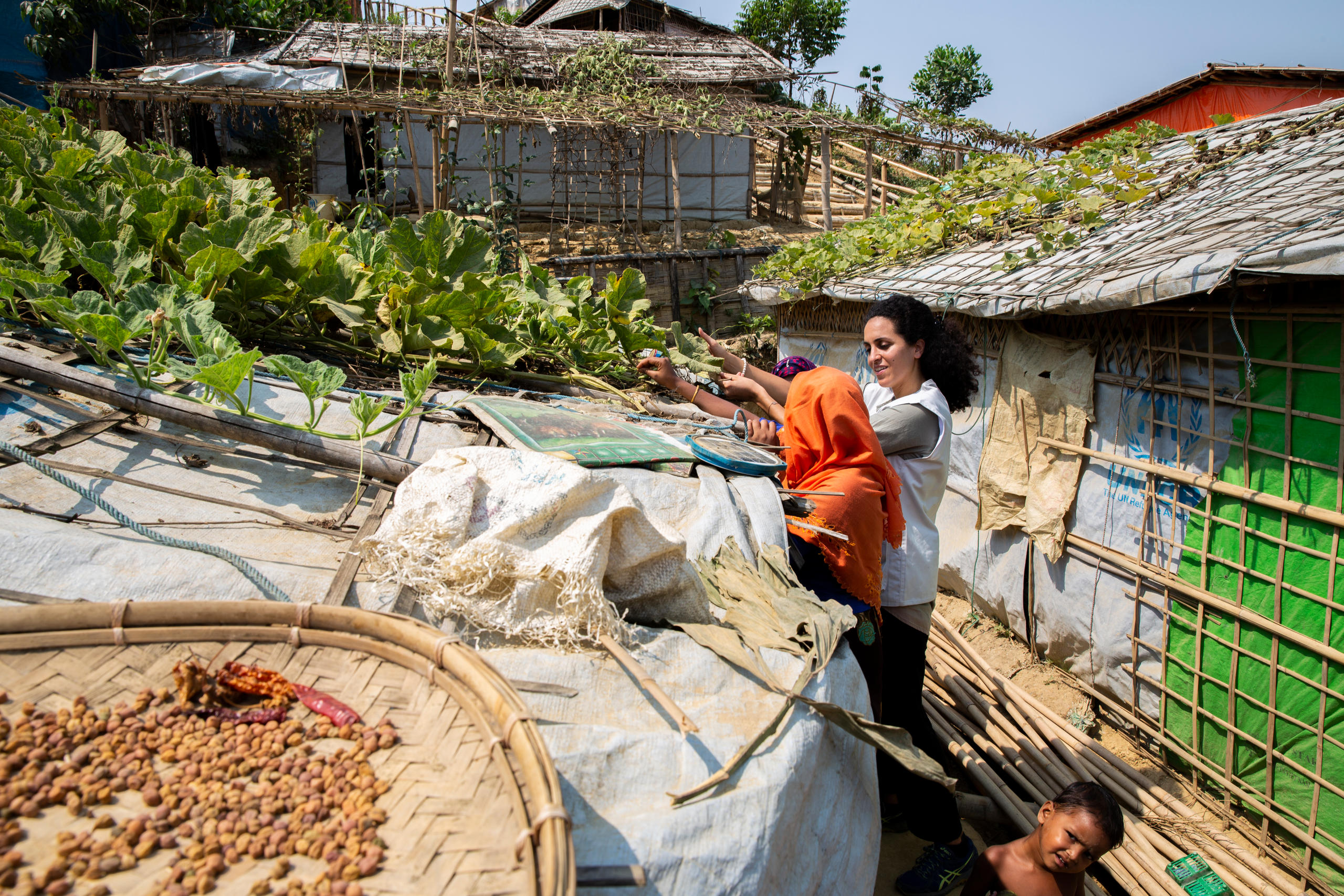
Behind the market, Mekonen visits a family that is part of the latest Helvetas project. With the support of the local partner organisation Shushilan, Helvetas trains women in vegetable gardening and shows them how to build climbing gardens in the little spaces around their houses. In this way, families can eat healthier.
So far, they have lived off the staple foods of rice, lentils and oil that have been distributed here since the arrival of the Rohingya. And they can sell their vegetables in the market, which gives them a small income with which they can buy fish or meat, for example.
“The danger is that the fate of the Rohingya will be forgotten,” says Mekonen. “But these people will still need our help in the future because their situation will not change. She looks at Sarah Begum, 20, who is preparing lunch for her family in her hut. “I am happy I can contribute at least a little bit with my work to making these people’s lives a bit more worth living.”
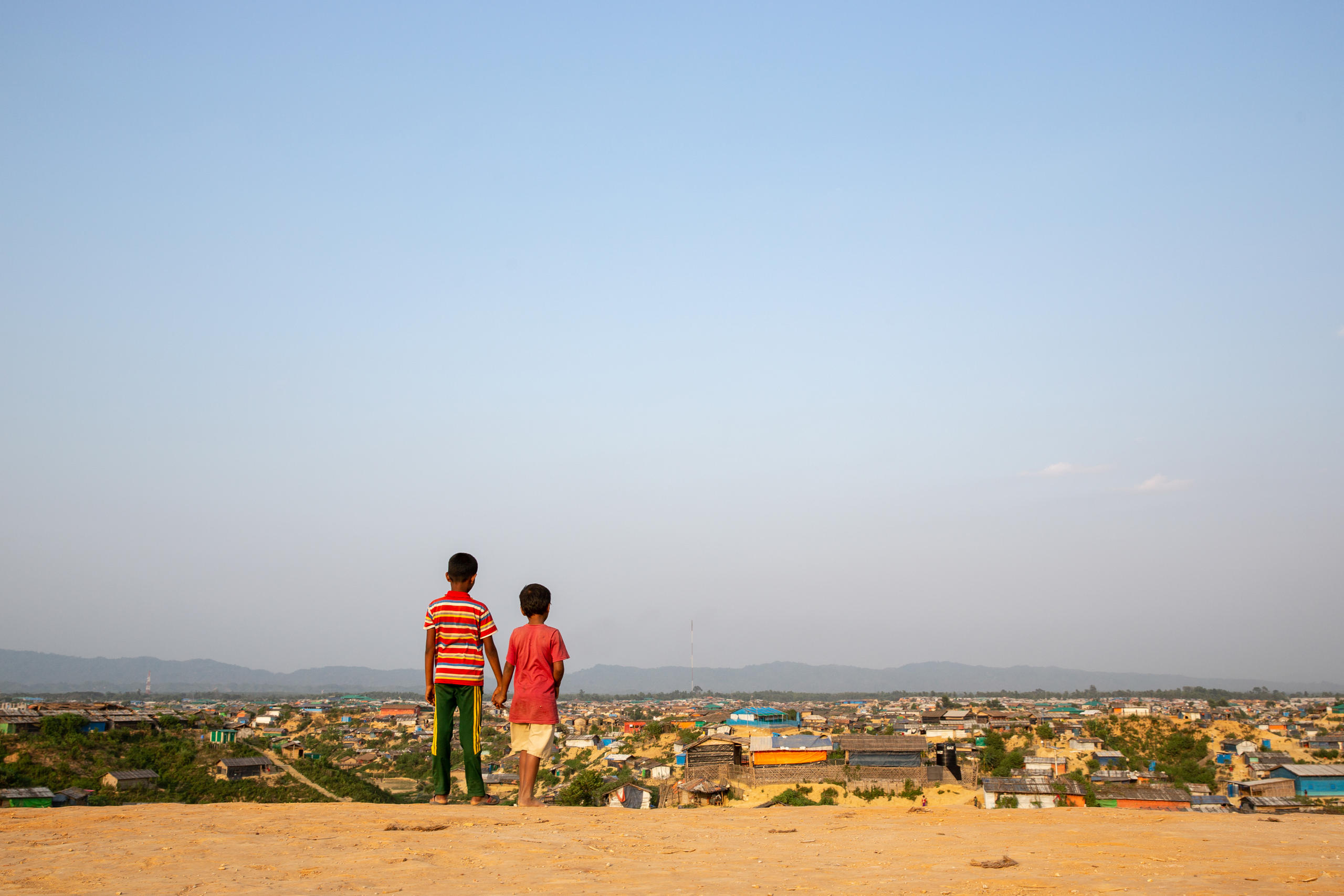
Swiss development organisation Helvetas has been active in Bangladesh for 19 years, so it was able to help the Rohingya refugees from Myanmar quickly with emergency aid kits. The long-term projects mentioned in this report were also funded by donations from Swiss Solidarity, a Swiss institution that organises and coordinates donations in the event of disasters.
In four camps, Helvetas is also responsible, along with Alliance2015 European partner organisations ACTED and PIN, for improving safety. The people in the camp are informed about playgrounds for children, learning centres, hospitals or approaching dangers such as cyclones or heavy rain. And the Rohingya also do their bit for the common good. For example, a women’s group has improved the paths to the latrines, while a boy’s group has ensured that the latrines are lit at night.
Freelance photojournalist Patrick RohrExternal link produced this report for swissinfo.ch during a stay with Helvetas.
Translated from German by Julia Crawford, swissinfo.ch

In compliance with the JTI standards
More: SWI swissinfo.ch certified by the Journalism Trust Initiative
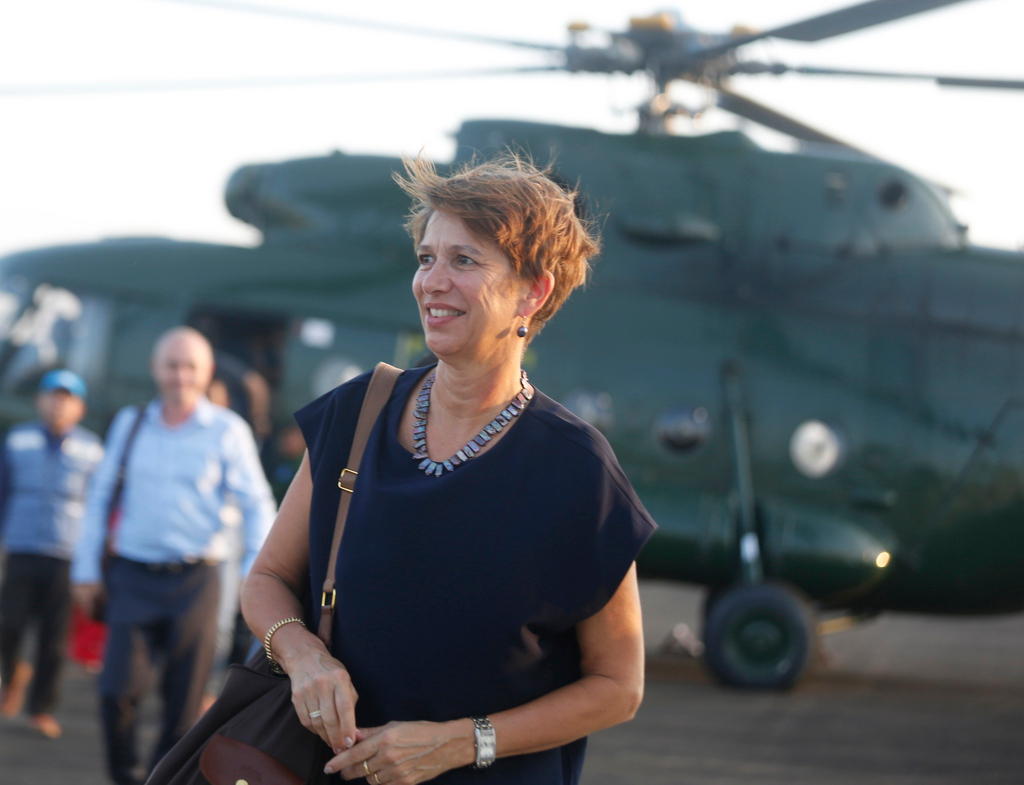
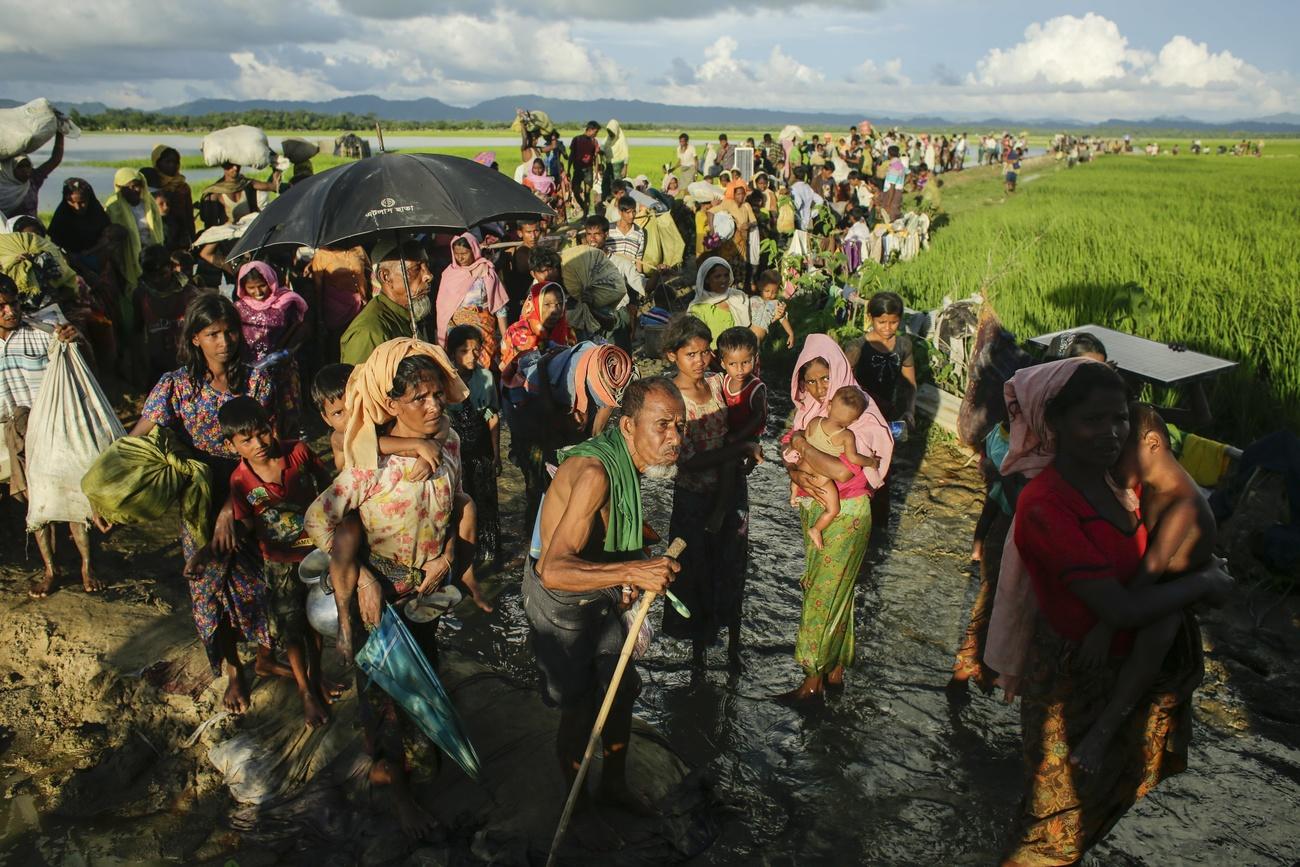
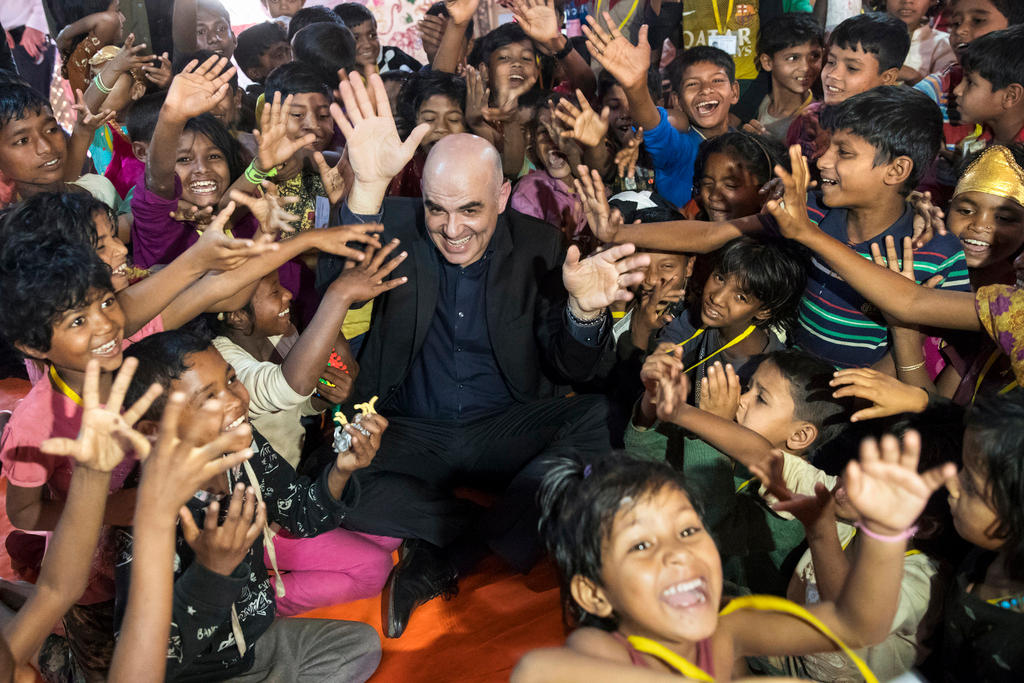
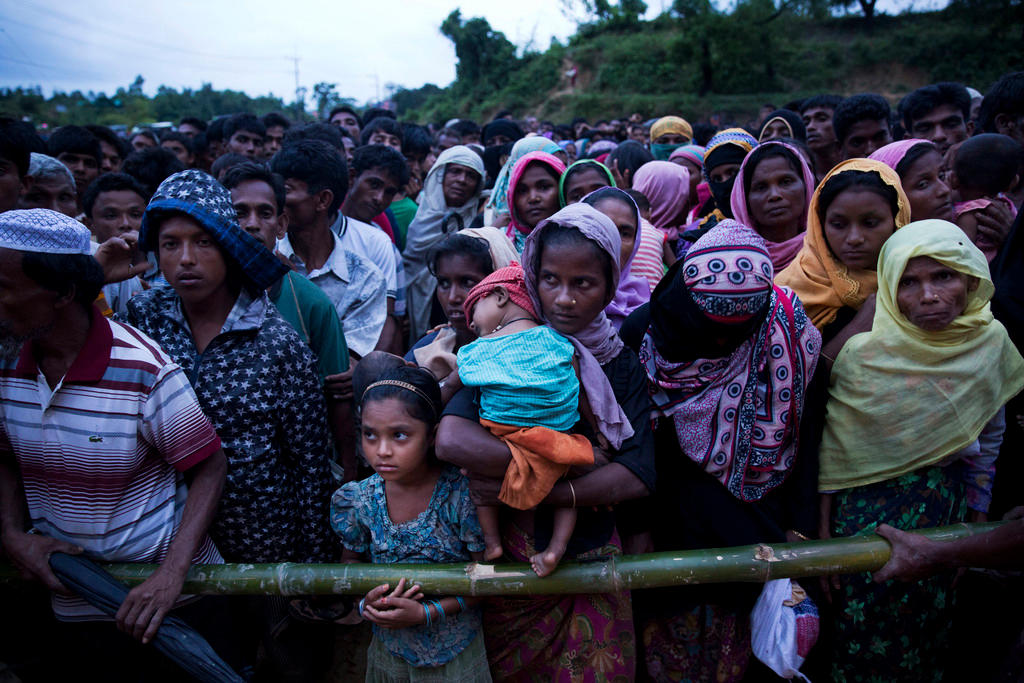
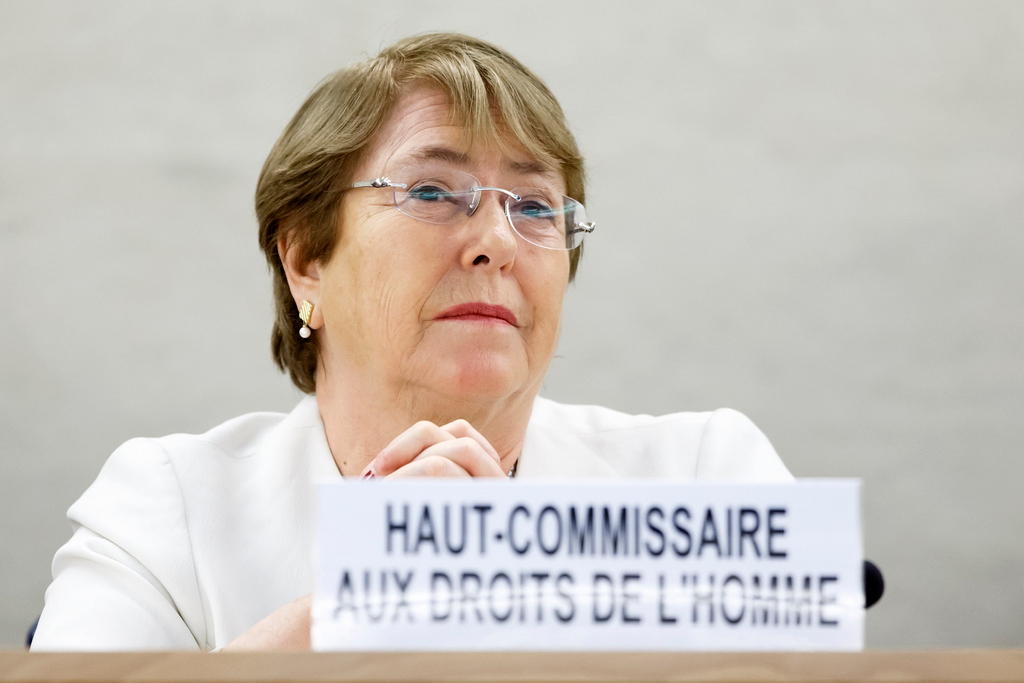
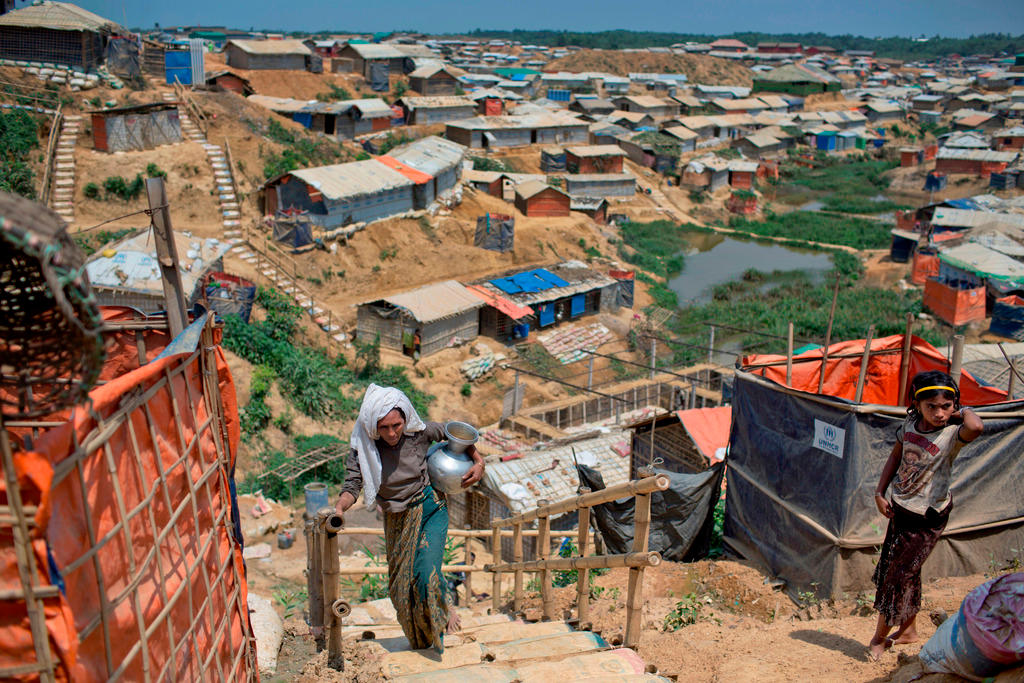
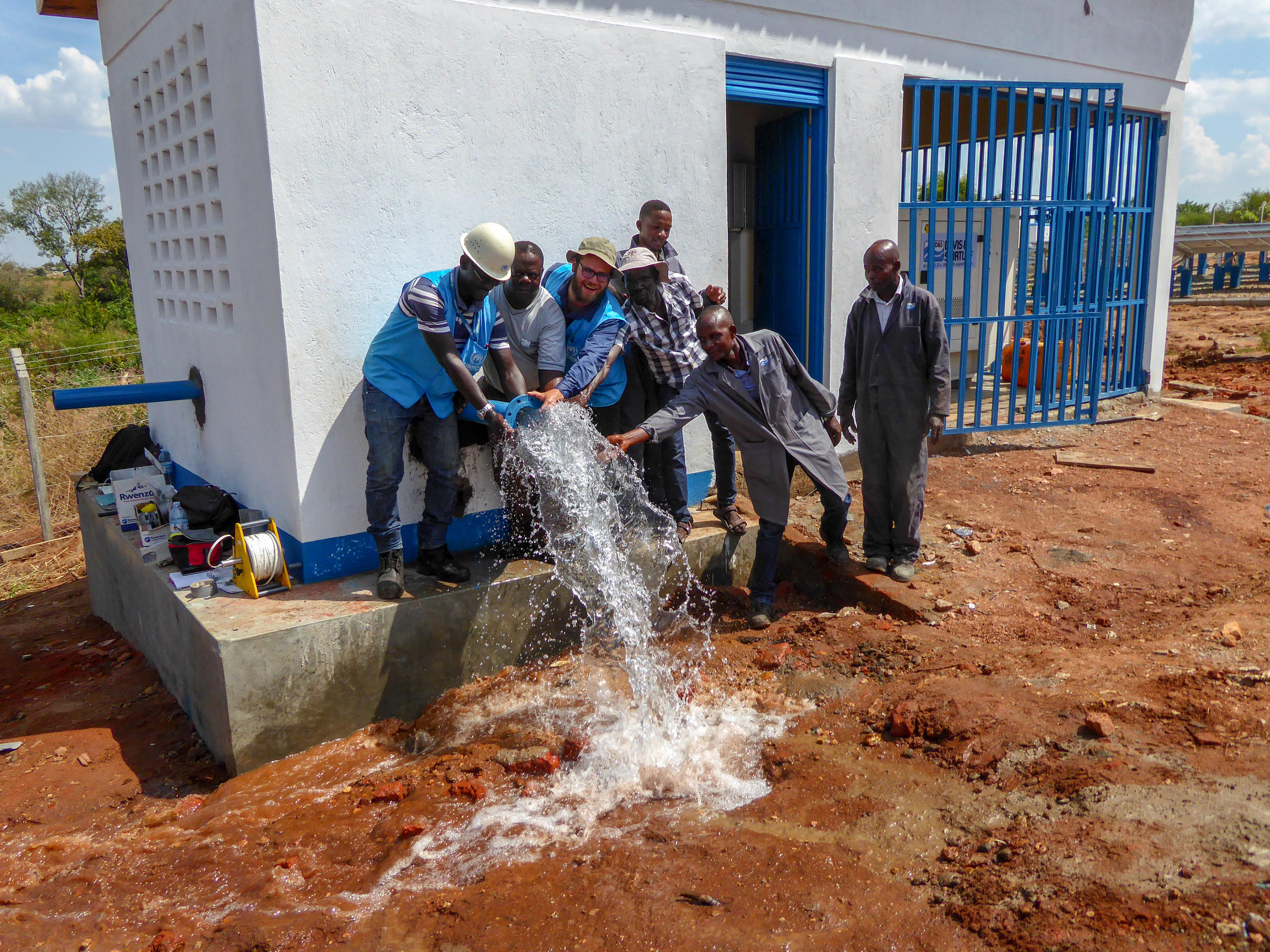
You can find an overview of ongoing debates with our journalists here. Please join us!
If you want to start a conversation about a topic raised in this article or want to report factual errors, email us at english@swissinfo.ch.